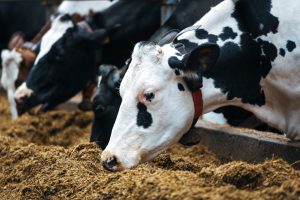Lucas Pantaleon
Uterine bacterial contamination is common in dairy cattle during the first 2 weeks postpartum. Endometritis causes delayed ovarian activity and prolonged luteal phases, resulting in reduce submission, conception and pregnancy rates and increased culling. Recently the term purulent vaginal discharge (PVD) was adopted because it is more descriptive and covers a range of conditions: endometritis, vaginitis and cervicitis.
Ultrasonographic scoring systems for assessing endometritis are practical and effective in diagnosing clinical and sub-clinical diseases, as well as a good predictor for reproductive outcome. The identification of PVD and presence of endometritis on ultrasonographic examination (UE) are key for diagnosis of reproductive tract disease (RTD) in cows.
Prevalence of reproductive track disease. Are the data accurate?
The incidence of RTD varies widely around the globe, this is due to lack of a clear definition for the disease, lack of diagnostic gold standards and differences in populations and farming systems. Furthermore, many risk factors can play a role in the development of RTD, such as retained fetal membranes (RFM), metritis, dystocia, primiparity and negative energy balance.
Researchers in Ireland investigated the prevalence of RTD by using two diagnostic criteria methods: PVD and UE. Furthermore, investigators assessed the risk factors for increased incidence of RTD if these methods were used in isolation or in combination. The number of cows included in the study was 2,460 which belonged to 8 different farms. Investigators analyzed data from 5,049 pre-breeding examinations conducted each spring over 5 years.
For PVD, defined as a cow with purulent or mucopurulent discharge, the prevalence in this study was 9.8%. This number is similar to other previously published work, however those studies included cows that had flecks of pus in clear mucus as positive PVD cases. Regarding UE, the prevalence was also comparable to results published by other researchers. The prevalence of both PVD and UE in the study reported here was 3.5% between 25 and 49 days in milk (DIM). This was the first study reporting a combined prevalence of PVD and UE.
The shared risk factors across all models were DIM at the time of examination, the interaction between DIM at time of exam and RFM, twining and a cow’s inferior PTA for calving interval. The effect of DIM was significant, the earlier the pre-breeding examination was preformed, the higher the chances for testing positive with either method alone or combined. This was likely due to the high rate of clinical self-cure seen in cows with RTD.
The presence of RFM delays the uterine involution and maintains the cervix open, hence creating an ideal environment for bacterial growth. Therefore, RFM is a well-known risk factor for RTD. An interesting finding was the significant association between RFM and DIM, suggesting that the probability of a positive diagnosis for RTD is much higher for a cow with RFM when she is examined earlier. This information highlights the importance of targeting examinations for cows with RFM. Twining contributes to RTD because there is an increased risk of dystocia and metabolic imbalances. The knowledge that twining is a risk factor for RTD is useful because it will identify high risk cows and also allow for the implementation of preventative measures.
Improving the knowledge of reproductive track disease risk factors
Overall researchers demonstrated that most of the risk factors for PVD and UE are the same, but some are distinctly different, suggesting that in certain cases the 2 methods diagnose different components of the RTD complex.
Investigation of risk factors for the different methods for RTD will improve the knowledge of risk factors, thus aiding with improved herd-level monitoring and preventative measures and helping with the identification of risk cows in seasonal calving systems for early intervention and treatment.
Reference
Kelly, E., McAloon, C.G., O’Grady, L., Duane, M., Somers, J.R., Beltman, M.E. 2020. Cow-level risk factors for reproductive tract disease diagnosed by 2 methods in pasture-grazed dairy cattle in Ireland. Journal of dairy science. 103(1): 737-749.
© 2019 Dairy Knowledge Center, LLC. All Rights Reserved.









